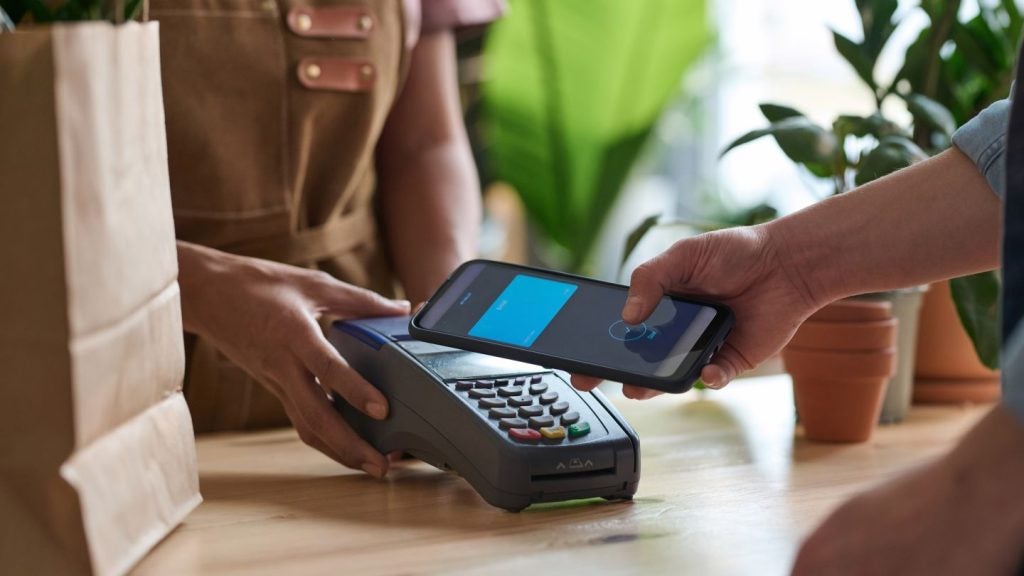HomeATM ePayment Solutions, a
Chicago-based payments technology company is betting that the time
has come for peripheral readers for mobile payments.
As it awaits certification by the leading US
electronic funds transfer networks, HomeATM is focusing on the
“low-hanging fruit” presented by “eyeball-to-eyeball transactions,”
Mitchell Cobrin HomeATM’s COO told EPI.

Access deeper industry intelligence
Experience unmatched clarity with a single platform that combines unique data, AI, and human expertise.
Those customer-facing payments, often taking
place at small shops, flea markets, taxicabs and other niche
businesses that currently take cash or cheques, are ideal for
HomeATM’s portable card readers that can be used with mobile
phones, Cobrin said.
HomeATM has been promoting its SafeTPIN
card-swipe and PIN-pad device that consumers can plug into home
computers, and has modified the product to create 12 prototypes it
is showing to merchant acquirers. The company is even more excited
about its SafeTPIN mobile device, which can be inserted into the
audio jack of mobile phones, and marketed to acquirers, who would
in turn sell it to merchants.
HomeATM has shipped 25,000 units as part of
the beta test, and Cobrin said the company wants between 75,000 and
100,000 of the CircleSwipe units deployed by the end of this
year.
Booming demand

US Tariffs are shifting - will you react or anticipate?
Don’t let policy changes catch you off guard. Stay proactive with real-time data and expert analysis.
By GlobalData“We want to stay focused on the
market opportunities in mobile service business and grow in a
disciplined way,” Cobrin said. “Right now we are doing all we can
to keep up with demand and grow the business the right way.”
Cobrin said the company’s SafeTPIN reader has
always had the capability to work with all mobile phones. The
Payment Card Industry Security Standards Council certified SafeTPIN
in 2009.
HomeATM has also developed a CircleSwipe
device which incorporates the same encryption technology as
SafeTPIN. The technology encrypts the Track 2 data on payments
cards’ magnetic stripes, which includes the card’s primary account
number and expiration date.
HomeATM also has a patent pending on the
technology powering CircleSwipe; the device uses sound waves and
the friction generated when cards are swiped to generate the power
needed to encrypt the Track 2 data, so it does not drain a mobile
phone’s battery.
By targeting independent sales organisations
and merchant acquirers, HomeATM can position the CircleSwipe device
as an easy, secure way for businesses that have relied on cash and
cheques to accept any payment card through a mobile phone.
That means that mobile service businesses,
from electricians and plumbers to pizza delivery drivers can accept
card payments, Cobrin said. There are more than 8 million so-called
direct service organisation salespeople in the United States, he
said, and many of them have no way to accept cards.
“Take the classic example of the Avon lady,”
he said. “She has a buyer in front of her and she wants to close
the deal, but she has to rely on cash or cheque, and as a result,
she experiences a high cancellation rate. If she could plug our
reader into her mobile phone and take that card payment on the
spot, she is able to close every transaction at the point of
sale.”
At the other end of the market, Cobrin said,
is the opportunity to provide mobile payments processing for online
merchants seeking a less expensive way to handle card payments.
“Eventually it will proliferate into
e-commerce and we are confident that will happen soon, as we have
some larger merchants just waiting on that to implement the
product,” he said. “We see tremendous opportunities at each end of
the market.”
Cobrin said that HomeATM is primarily focused
on the US market, but his partners are Hong Kong-based engineers
who have initiated talks with a couple of as-yet-unnamed Chinese
companies that could result in a major announcement in the near
future.
“We do see some promising opportunities in the
Asian market, and with our partners in Hong Kong, we will certainly
explore that market as well,” he said.
Solutions proliferating
Cobrin credited the recent
development of a mobile phone reader by Jack Dorsey, social network
service Twitter’s founder, for bringing credibility to the concept
of mobile phone card readers. Dorsey’s Square Inc unveiled a
cube-shaped reader that plugs into Apple’s iPhone, which Cobrin
sees as further proof of the market for the devices.
“We are seeing a lot of buzz around the idea
now, and we have Square to thank for that,” he said. “CircleSwipe
is a beneficiary of that attention.”
In addition to CircleSwipe and Square, card
readers that can be used with iPhones have also been launched
recently by US payments technology vendors Mophie and VeriFone
Holdings under the respective brand names Mophie Marketplace and
PAYware Mobile
Acculynk, another entrant into the US mobile
card payments race, recently announced a partnership with national
ATM and POS network Credit Union 24 to pilot its PaySecure
software, which displays a virtual PIN-pad on users’ computer
screens; shoppers enter their PINs by clicking the appropriate
numbers on the screen.
Acculynk also is conducting tests with
Fidelity National Information Systems’ ATM and POS network services
supplier NYCE Payments Network, as well as the debit networks
operated by Fiserv’s Accel/Exchange and Discover Financial
Services’ Pulse unit.
Competition welcome
Cobrin said that the more entrants,
the better, as experimentation with a variety of readers makes
merchants more willing to see mobile readers as a viable
option.
“We see so much opportunity in the
face-to-face market right now that there is room for several
options,” he said. “We think we have developed a superior product,
and one that really meets a market need, so the more proof of the
concept the better.”
Ultimately, he said, it is the low cost of the
devices and the ease with which they can be deployed that will tell
the tale.
“We’re able to offer these merchants an option
at about one-tenth the cost of current solutions,” he said. “That
alone is a pretty compelling business case, and we feel like once
they use it, they’ll quickly realise that it is a real improvement
over chasing cash and checks.”







